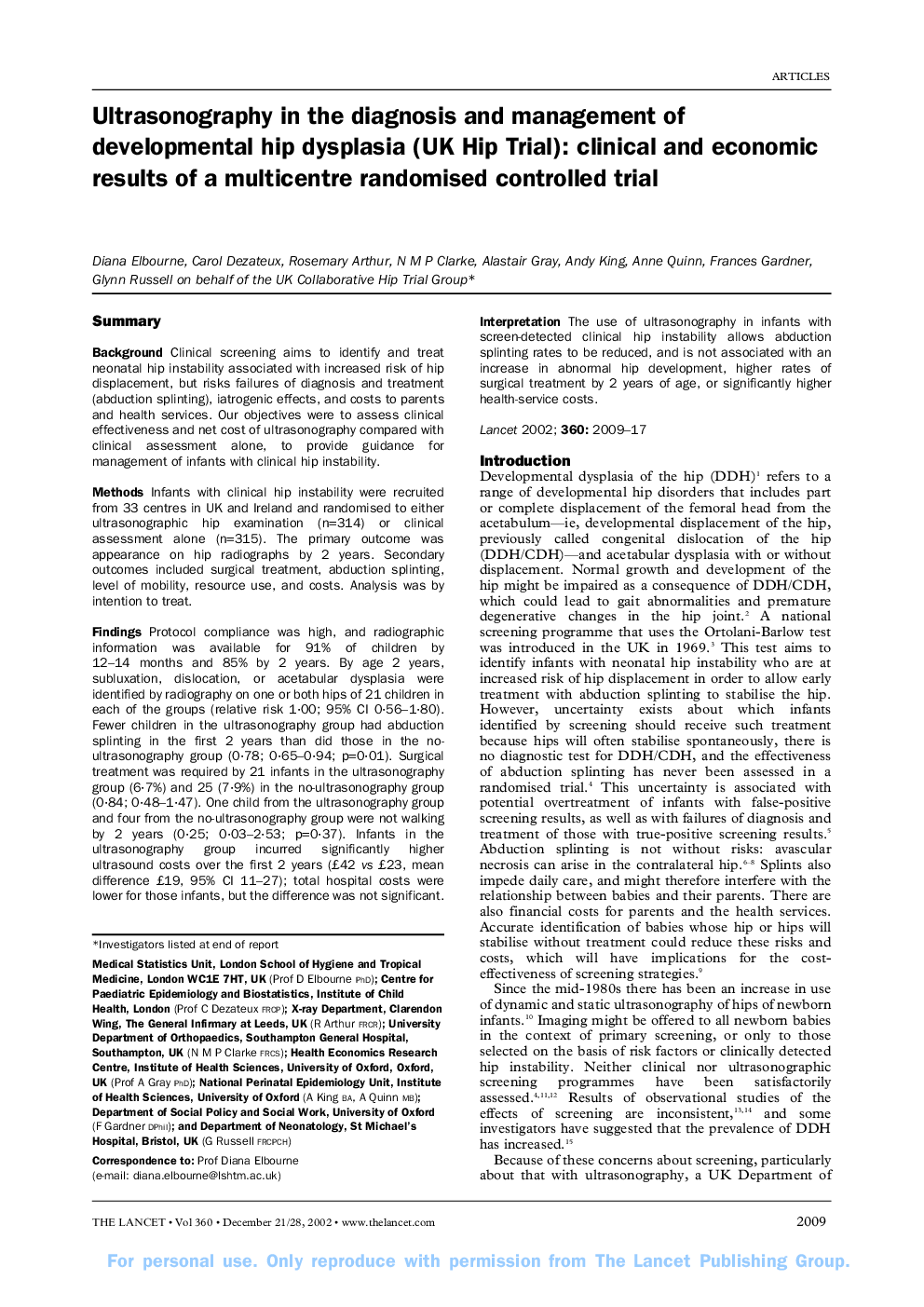| کد مقاله | کد نشریه | سال انتشار | مقاله انگلیسی | نسخه تمام متن |
|---|---|---|---|---|
| 3508835 | 1597144 | 2017 | 9 صفحه PDF | دانلود رایگان |
SummaryBackgroundClinical screening aims to identify and treat neonatal hip instability associated with increased risk of hip displacement, but risks failures of diagnosis and treatment (abduction splinting), iatrogenic effects, and costs to parents and health services. Our objectives were to assess clinical effectiveness and net cost of ultrasonography compared with clinical assessment alone, to provide guidance for management of infants with clinical hip instability.MethodsInfants with clinical hip instability were recruited from 33 centres in UK and Ireland and randomised to either ultrasonographic hip examination (n=314) or clinical assessment alone (n=315). The primary outcome was appearance on hip radiographs by 2 years. Secondary outcomes included surgical treatment, abduction splinting, level of mobility, resource use, and costs. Analysis was by intention to treat.FindingsProtocol compliance was high, and radiographic information was available for 91% of children by 12–14 months and 85% by 2 years. By age 2 years, subluxation, dislocation, or acetabular dysplasia were identified by radiography on one or both hips of 21 children in each of the groups (relative risk 1·00; 95% Cl 0·56–1·80). Fewer children in the ultrasonography group had abduction splinting in the first 2 years than did those in the no-ultrasonography group (0·78; 0·65–0·94; p=0·01). Surgical treatment was required by 21 infants in the ultrasonography group (6·7%) and 25 (7·9%) in the no-ultrasonography group (0·84; 0·48–1·47). One child from the ultrasonography group and four from the no-ultrasonography group were not walking by 2 years (0·25; 0·03–2·53; p=0·37). Infants in the ultrasonography group incurred significantly higher ultrasound costs over the first 2 years (£42 vs £23, mean difference £19, 95% Cl 11–27); total hospital costs were lower for those infants, but the difference was not significant.InterpretationThe use of ultrasonography in infants with screen-detected clinical hip instability allows abduction splinting rates to be reduced, and is not associated with an increase in abnormal hip development, higher rates of surgical treatment by 2 years of age, or significantly higher health-service costs.
Journal: - Volume 360, Issue 9350, 21–28 December 2002, Pages 2009–2017
